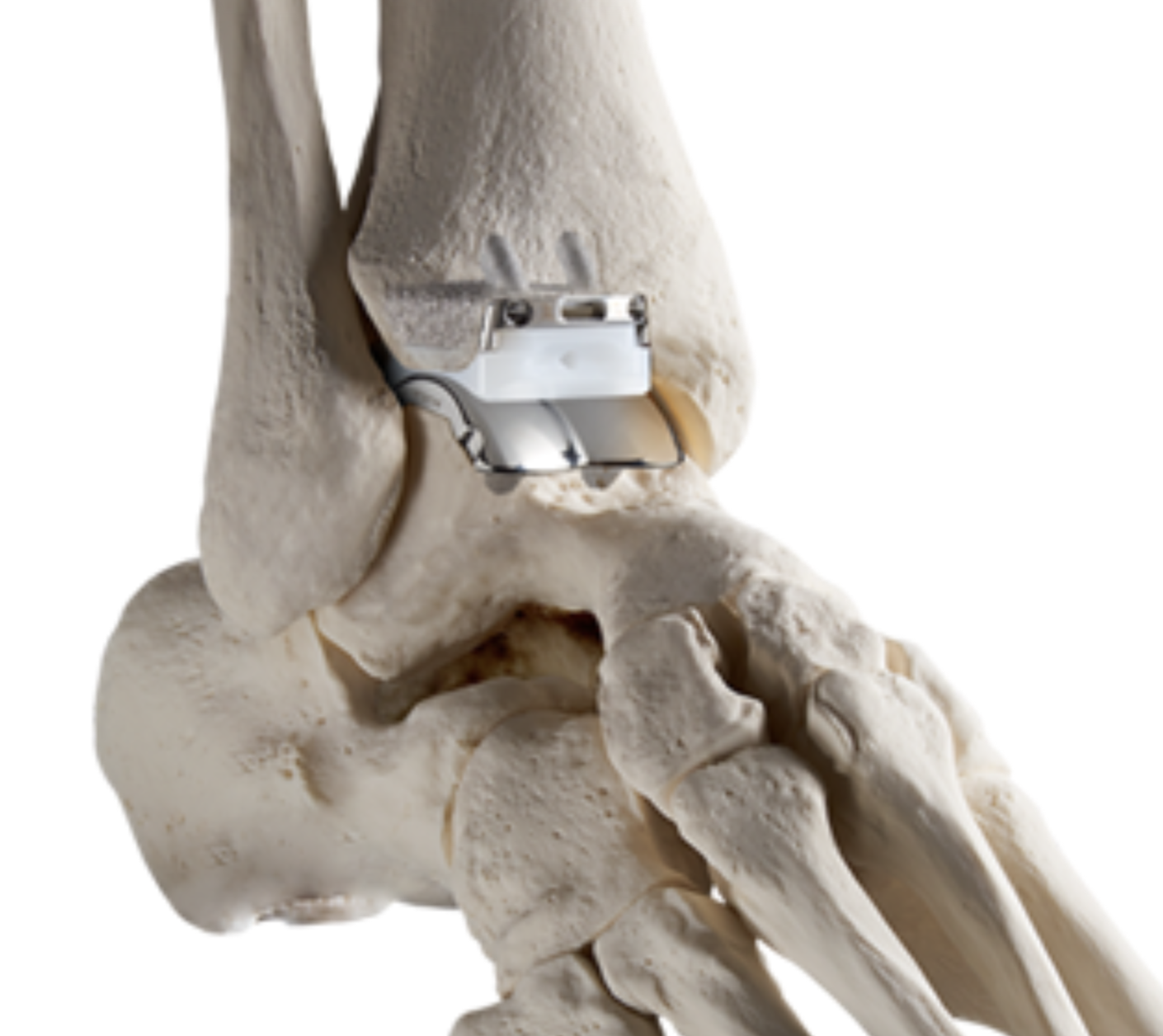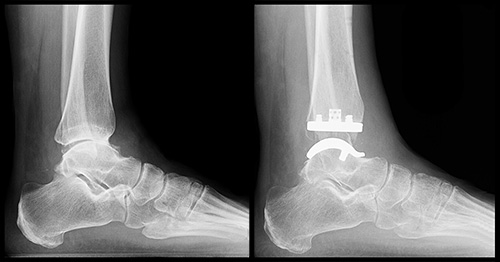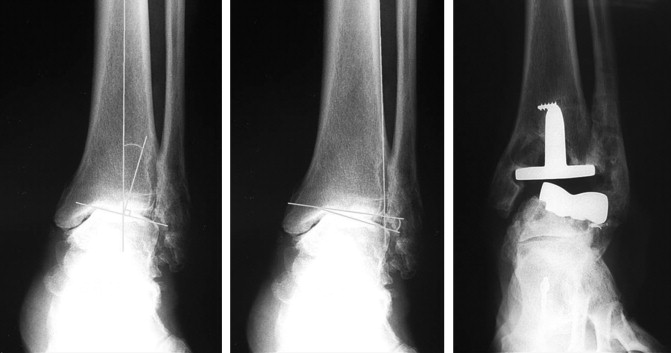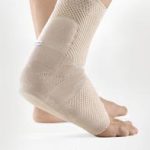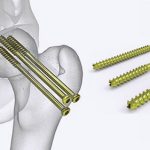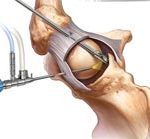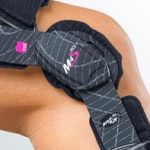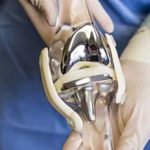ANKLE REPLACEMENT
What is total ankle replacement?
Total ankle replacement is a type of joint replacement surgery. It’s also called ankle arthroplasty. It replaces damaged parts of the ankle with prosthetics (plastic or metal parts). These new parts work together and move like your natural joint. This treatment is usually only for people with ankle pain that doesn’t go away and affects their quality of life.
What can ankle joint replacement treat?
Total ankle replacement surgery usually treats ankle arthritis. Arthritis develops from changes to the cartilage (tough tissue) covering the bones of a joint. The cartilage becomes thinner and rougher. Ankle arthritis can happen with age, from general wear and tear. It may also come from repeated ankle injuries, ankle fractures or certain health conditions.
Common symptoms of ankle arthritis include:
- Difficulty walking.
- Joint pain.
- Joint swelling.
Most people find relief from ankle pain and other symptoms with basic treatments, often used together. Healthcare providers consider these treatments “conservative therapies.” They may include medications, physical therapy or orthotics (special shoe inserts or devices, like braces, to relieve pain). Sometimes, though, severe ankle arthritis requires more targeted treatment. When that happens, a healthcare provider may suggest total ankle replacement.
Who should not have ankle replacement surgery?
Ankle replacement is not the best option for every person with ankle arthritis. It may not provide a good fit for you if your ankles are severely deformed or unstable. Similarly, healthcare providers may not recommend replacement for people with certain medical conditions:
- Bone infections.
- Circulatory problems.
- Diabetes.
- Obesity.
The first step is to see a healthcare provider who will perform a physical exam and x-rays to determine if you are a candidate for an ankle replacement. Ankle replacement is not the only type of ankle surgery. If ankle replacement isn’t the right procedure for you, other possibilities include ankle fusion or ankle arthroscopy.
Cost of Total Ankle Replacement in Iran
The price of an ankle replacement in Iran depends on the surgeon’s experience and reputation as well as their method and whether you need a partial or total joint replacement. It also depends on the hospital in which the surgery is performed. Generally, an ankle arthroplasty in Iran costs from $4,000 to $7,000 while the same surgery is around $40,000 in the United States, and its starts from $8,000 in India.
How do I prepare for total ankle arthroplasty?
It’s important to go into surgery and rehabilitation (recovery) with realistic expectations. Talk to members of your care team about how to get ready for the procedure. Knowing what to expect can help you prepare for challenges and make plans for recovery. Before surgery, your team may recommend that you:
- Start physical therapy.
- Stop smoking.
- Stop taking certain medications.
Discuss what recovery might look like with your family and friends. You’ll have trouble walking after your ankle replacement. Be sure to make a plan for accomplishing daily tasks. You may need help grocery shopping, getting up and down stairs, or caring for a pet.
What happens during total ankle joint replacement?
Only a highly skilled orthopaedic surgeon should perform total ankle joint replacement. The surgeon works with an anesthesiologist, nurses and other healthcare providers. Together, the team will:
- Give general anesthesia or a nerve block.
- Make an incision in the front of your ankle.
- Remove the degenerated (worn-down) bone and cartilage.
- Prepare the joint surface for the new prosthetic pieces.
- Insert the pieces and check range of motion in the joint.
- Perform other procedures to make sure proper ankle and foot alignment.
Total ankle replacement is typically an inpatient procedure, but you usually only spend one night in the hospital after surgery. Some patients may be candidates for outpatient total ankle replacement surgery.
What are the risks and benefits of ankle replacement?
An ankle replacement helps you regain strength and stability in your ankle. The treatment also preserves range of motion. The replacement parts articulate, or move together, like your natural joint. This flexibility can allow you to walk normally, with less pain, and return to a more active lifestyle.
Often, ankle replacement is preferable to ankle fusion (arthrodesis). Fusion surgery permanently joins the ankle bones together, limiting range of motion. This loss of flexibility can affect the way you walk or cause arthritis to develop in other joints. Talk to your provider about which procedure — ankle replacement or ankle fusion — best fits your unique needs.
Although rare, ankle surgery can lead to complications. Possible risks of ankle replacement include:
- Blot clots.
- Infection.
- Loosening of replacement parts, requiring a procedure to repair.
- Nerve or blood vessel damage.
- Problems healing the incision.
- Wearing down of metal and plastic replacement parts over time.
Recovery and Outlook
How long is recovery after ankle arthroplasty?
Recovery from ankle arthroplasty can take anywhere from six to 12 months. Most people use crutches or a walker while wearing a splint or cast. The split or cast keeps the ankle immobilized (unmoving) to heal. During this time, your healthcare provider will ask you to take medications to prevent blood clots.
Physical therapy after surgery can help you regain mobility in your ankle. Rehabilitation may include:
- Gait training to help you stand and walk.
- Massage to decrease swelling.
- Strengthening exercises.
- Stretches for range of motion and flexibility.
- Weight-bearing activities that get harder over time.
Your healthcare provider may recommend coming in for scans and follow-up visits after surgery. This extra care can ensure your ankle heals properly.
Will I need a second surgery?
Some people do need a second ankle surgery. Over time, the plastic and metal parts in the joint replacement may wear out. You can preserve your prosthetic ankle by maintaining a healthy body weight. You can also avoid high-impact activities that put too much strain on the joint.

